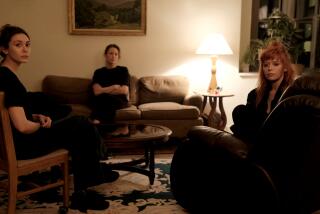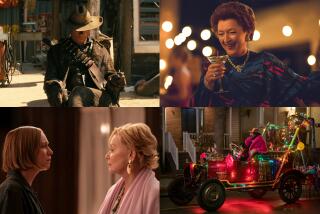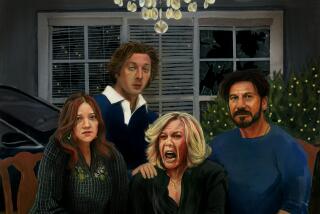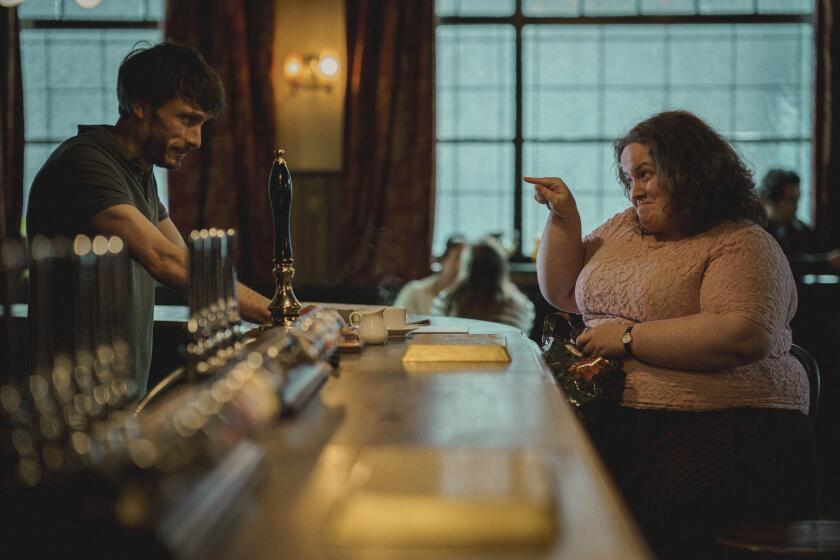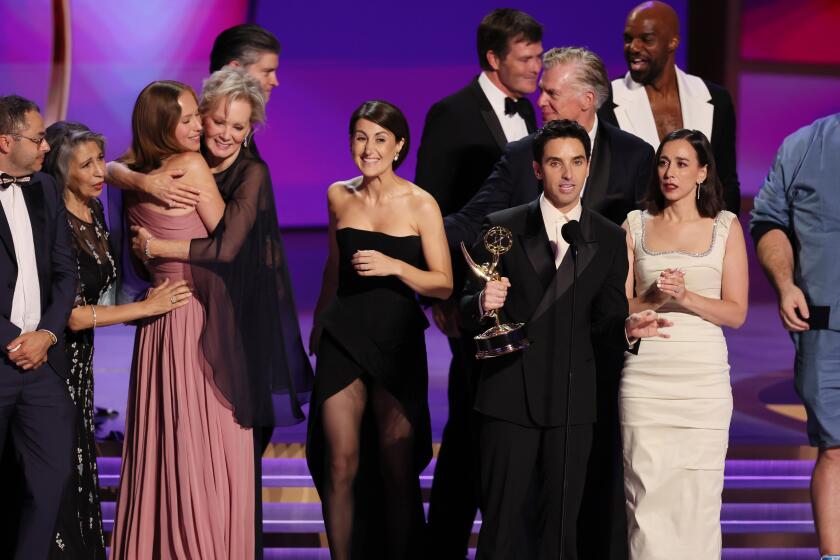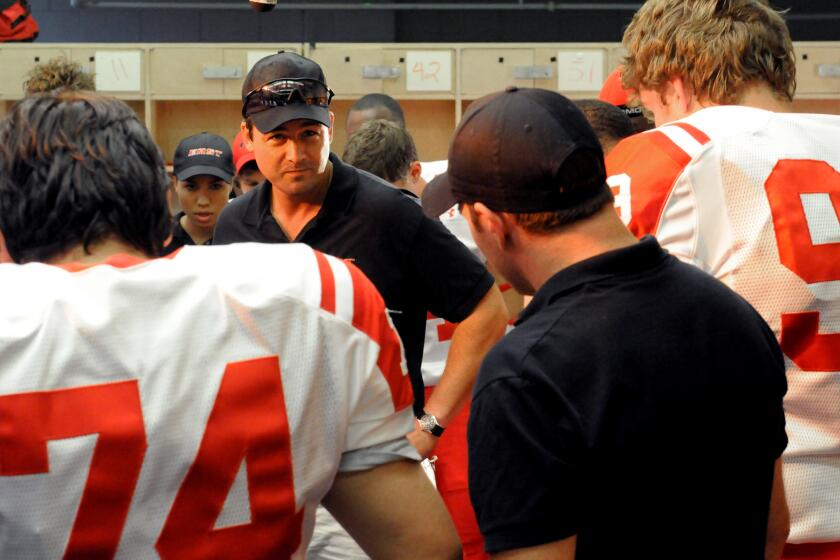Directors have unique visions for their stories, but they all know which scene pulls their film together

Remember the scene that sticks with you as the film’s credits roll? The one you’re probably able to remember most readily an hour, a day, a week after seeing a great film? That’s a key scene, and as these award season directors remind us, what makes a key scene crackle can be any number of elements – but mostly, they’re the unexpected, emotional events that make the film worth watching over and over again.
Darren Aronofsky
“Mother!” (September release)
“It’s a very strange film because it is so linear. Normally, when you make most movies you can move scenes around and they create other meanings, and you can do a lot in the edit room. The most important part of the film, and the part I like the most is the fever dream. Reel five of this movie is a 25-minute-long sequence of escalating intensity where the world becomes more of a nightmare. Every department had to work together to create this sequence where the world is escalating and falling apart, yet the audience hopefully remains grounded because of Jennifer Lawrence and the truthfulness of her emotions.”
WATCH: Video Q&A’s from this season’s hottest contenders »
Bong Joon Ho
“Okja” (on Netflix)
“The essence of this film is contained in the three scenes where one character whispers into the ear of another character. Out of these three scenes, the ‘absolute key scene’ is the third and final moment where Okja whispers into Mija’s ear. It is a moment where the animal whispers into the little girl’s ear. That, to me, feels like the ‘key’ scene. You’ll understand why after you watch the film!”
Scott Cooper
“Hostiles” (Dec. 22)
“Spoiler alert! The key scene comes toward the end of the film, when Capt. Blocker [Christian Bale] approaches a near-death Chief Yellow Hawk [Wes Studi], and these two men come together over their shared loss. They are former bitter rivals who illustrate the strength and humanity to come together as one, understanding that death touches us all. In the film, Christian says in Cheyenne, ‘A part of me dies with you.’ These are two people who have fought one another for years, but in this moment they demonstrate healing and inclusion and an understanding of the other’s way of life.”
Stephen Frears
“Victoria & Abdul” (October release)
“There’s a very good scene where Victoria realizes she’s made a mistake. It’s all to do with the Indian mutiny; she thought the Indians were responsible [and blamed Abdul, who is Muslim], and she realizes she’s made a mistake. And in making that mistake, she is embarrassed. There is always a moment where you try to get [actress] Judi Dench in a mess, and she makes a fool of herself and then she has to get out of it. I remember being very conscious of it in ‘Philomena,’ where she had to dig herself out of a hole she created.”
Craig Gillespie
“I, Tonya” (Dec. 8)
“It’s a scene with Margot [Robbie] right before Tonya [Harding] goes on the ice at Lillehammer. I didn’t want to condone what she did, but I wanted to put a human face on it, and it comes down to this moment – which ended up being a spontaneous take that completely grounds the film. It’s the shot where she’s in front of the mirror and trying to put on her makeup. We did it in one take, and she’s so dialed in on that moment, it’s moving.”
Aaron Sorkin
“Molly’s Game” (Dec. 25)
“There’s a scene toward the end where Molly (Jessica Chastain) and Larry (Kevin Costner) are on a bench in Central Park near the skating rink. This is a moment all protagonists are required to have: a moment of self-reflection, where they realize something about themselves they hadn’t realized before, and that moment is generally catalyzed by another person. In this case, it’s her father, who has been a strong force in her life – not always for good. Aside from being beautifully performed by those actors, you get this moment of release. We don’t see much of Kevin in the movie – but we feel him because of something that happens in the beginning. So this scene is not the conclusion of the movie, but of this one story.”
Joe Wright
“Darkest Hour” (In theaters)
“The big war cabinet meeting, which comes about 45 minutes into the movie. It was a 10-page dialogue scene, with 17 men sitting around a table, and it’s in that scene that we set out the central dilemma for Churchill [Gary Oldman], whether to choose appeasement or continue his policy of resistance. Ten pages of dialogue doesn’t scream cinematically, so I had to find a way of creating a kind of kinetic, dramatic tension, and that was a great challenge. I wanted to see if I could shape something out of clay, something that had a geography that the audience could see play like a thriller.”
Kenneth Branagh
“Murder on the Orient Express” (In theaters)
“Finding the body is a key scene. I found myself inspired by Alfred Hitchcock – in a sequence of his ‘Dial M for Murder,’ for an extended period we jump to an angle above the action – a bird’s-eye view. That perspective establishes that we can’t see how the characters are reacting, and it’s an unsettling experience. So as an audience, we have to lean in and it becomes clinical, with an implacable quality. From above, we understand that Poirot understands something else is going on – yet we do not go in and see the body. We put the audience in the same position as the murder suspects, denying them information at this time and surprising them with it later. This forbidden quality is quite forensic, and unsettling.”
James Gray
“The Lost City of Z” (April release)
“Fawcett [Charlie Hunnam] had these journals he’d take with him on the raft, and there’s a scene where he walks across the river and an arrow goes into his journal. He’s holding it out in front of his face, and he makes contact with the tribe across the river. It’s the scene in which a common humanity has begun to enter the discussion. It’s when I felt the film would try to uproot the notion that the jungle is full of savages and makes everyone crazy who goes there.”
James Mangold
“Logan” (March release)
“It’s Patrick Stewart’s first scene in the film. He’s in the dome and speaking with Hugh Jackman. It’s a scene that was allowed to breathe – and we learned about character. We leaned into the character in this eight-minute, two-person scene. A lot of people ask me about the rating of the movie – why it had to be R – and I say there’s a frankness and sexuality you can explore with an R rating, but another thing happens with an R: the movie is no longer under requirement to be sold to kids. That means you don’t have to up-cut it so it feels like a commercial, and you can live with the characters a little more. Patrick and Hugh are phenomenal in it – it spelled out for me that we were on the right track and on the hunt for something interesting. The emotional fragility of their characters was provocative to watch, given the strength and power we’d seen from these characters in the past.”
Marti Noxon
“To the Bone” (July release)
“It’s the scene where Ellen [Lily Collins] is with her mother Judy [Lili Taylor], and mom is trying to repair some of the damage she’s done in the past by feeding her. It’s one of those scenes that actually happened in my life, so I knew the tone of it. It needed to be incredibly awkward and almost funny, then turn and become incredibly emotional and sad. It’s the moment where we turned from naturalism to almost surrealism, and the DP and I looked at each other and said, ‘We need a crane.’ In the language of the film we didn’t use cranes at all until this sequence, and it worked beautifully. It takes you to a whole other place.”
Andy Serkis
“Breathe” (October release)
“It comes in the first act of the movie, where Robin Cavendish [Andrew Garfield] has contracted polio and wishes to die, and he’s incarcerated in a hospital that’s a waiting room for death. His wife says to him, how can I make life better for you? And Robin’s response is: ‘Get me out of here. Get me out of hospital.’ That’s the beginning of them breaking the shackles of what it meant to be disabled. They become pioneers and mavericks, because they are always two minutes from his death. The enormity of what they are trying to achieve is stepping out into the unknown – and that’s the real journey of the movie for me.”
Danny Strong
“Rebel in the Rye” (September release)
“The film climaxes with a scene with Whit [Kevin Spacey] and J.D. [Nicholas Hoult] in the woods. It’s the final scene between the two of them, and Whit walks away while J.D. tries to speak – but he can’t, and in that moment we know he’s not going to be able to go back to who he was before. It’s the moment where Salinger knows he can never go back again, and he can’t speak. It’s very impactful.”
Richard Linklater
“Last Flag Flying” (In theaters)
“The movie kind of builds. There’s a big scene later in the movie where they hunt down the mother of the buddy of theirs who died in Vietnam. A lot has come to a head between them, and it’s still bugging them all these years later. So they knock on her door – and it’s Cicely Tyson who’s the mom. She answers and you can feel her loss from all the way back there. Sal’s [Bryan Cranston] on a mission to tell her what happened. He realizes her interpretation of how her son died is not what he knows – and he has to make a choice. The movie is largely about truth: what it is, how it’s used and what it’s used for. In that case, he backs off of absolute truth and allows her to keep believing what she wants to believe.”
Martin McDonagh
“Three Billboards Outside Ebbing, Missouri” (In theaters)
“Probably the deer scene, with Mildred (Frances McDormand) and the deer. Because that’s one of the only times we see her when she’s not raging, when she’s alone and has to deal with the pain and the memory of the daughter and the tragedy. It’s almost the only time that we’re let inside of that rage. So it has to be as truthful and as sad as it could be. It was dusk. We got it probably around take four or five. I’d give a couple of notes, try little variations and modulations. I could usually use everything from take three, four and five. My work with Frances, most of it is done before shooting. She was so on the money about who she was, there wasn’t a lot of micro-management on the day. It was just about letting the camera run.”
Dee Rees
“Mudbound” (In theaters)
“There’s a moment where Ronsel (Jason Mitchell) and Jamie (Garrett Hedlund) have this ‘trust fall’ – Ronsel takes Jamie to this place where he likes to think, and asks, ‘Why are you being so nice to me?’ and Jamie reveals that he was saved by [an African American fighter pilot in WWII], and it’s a moment between these characters where they see each other differently. They have already had this connection of being soldiers, but in that moment you can see the regard they have for each other change.”
Matt Reeves
“War for the Planet of the Apes” (July release)
“The scene in the last section of the movie where Andy and Woody confront each other. Caesar [Andy Serkis] has come there to kill the Colonel [Woody Harrelson] and discovers that the Colonel is starting to devolve. The war of emotions in that scene is epic, for both of them. The idea of Caesar not letting that [need for revenge] go until he’s confronted with the fact that the Colonel is succumbing to the virus and is now in the most vulnerable position -- and understanding that the Colonel also lost his son in a much darker way. You see Caesar, who’s so filled with rage. He’s relishing the moment he’s finally going to sate that revenge and suddenly he sees something he didn’t expect and then everything changes. So that was a pivotal scene for sure.”
Dan Gilroy
“Roman J. Israel, Esq.” (In theaters)
“There’s a scene where Roman (Denzel Washington), who has spent his life as a civil rights attorney and activist, is invited to speak to a group of young activists. What starts out gloriously for him as a kind of reconnecting with his roots [becomes a realization] there’s a generational divide between him and the kids he is speaking to. It’s pivotal, because Roman realizes that his connection to the activism is not as strong as he thought it was and it’s a contributing theme that leads him on a path to a different place and pushes him away from some of his beliefs.”
Envelope writer Hugh Hart contributed to this report.
More to Read
From the Oscars to the Emmys.
Get the Envelope newsletter for exclusive awards season coverage, behind-the-scenes stories from the Envelope podcast and columnist Glenn Whipp’s must-read analysis.
You may occasionally receive promotional content from the Los Angeles Times.
